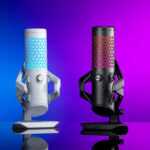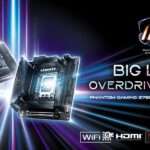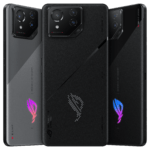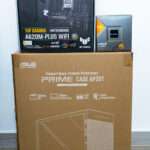The Premium Smartphone – ASUS Zenfone 3 [ZE552KL]

Asus Zenfone 3 smartphone was launched in 26th August 2016 at 313@Somerset – Singapore. The phone comes with a 5.5-inch Super IPS+ 10-finger touchscreen display, font and rear Corning Gorilla Glass panels with 2.5-dimension and resolution of 1920 pixels by 1080 pixels. Asus ZenFone 3 price for [ZE552KL – SGD $498] & [ZE520KL – SGD $398].
The Asus Zenfone 5 [ZE552KL] is powered by Snapdragon 625 MSM8953 64bits Octo-Core 14nmFinFET 2.0GHz processor and a Adreno 506 Graphics processor packed into system on the chip [SoC]. It also comes with 4GB of Low-power DDR3 RAM. The phone packs with embedded multi-chip [eMCP] package 64GB of internal storage that can be expanded up to 2TB via a microSD card.

As far as the cameras are concerned, the Asus Zenfone 3 comes with Sony IMX298 Sensor 16-megapixel primary camera on the rear and a 8-megapixel front shooter for selfies. The operating system [OS] runs Android 6.0.1 Marshmallow 64bits and is powered by a 3000mAh non removable battery. It also comes with a dual SIM (LTE and GSM) smartphone that accepts two Micro-SIM or Single Sim and a microSD card. Connectivity options include Wi-Fi MU-MIMO 802.11AC, AGPS and Bluetooth 4.2. Sensors on the phone include Proximity sensor, Ambient light sensor, Accelerometer, RGB sensor, IR senor and 360° recognition five-finger sensor.
It measures 152.59 x 77.38 x 7.69 (height x width x thickness) and weighs 155.00 grams.
| SPECIFICATIONS
ASUS ZenFone 3 (ZE552KL) |
| Display | 5.5-inch Super IPS+ LCD
77.3% Screen-to-body ratio |
| Construction | Front and rear Corning® Gorilla® Glass panels with 2.5D contoured edges and metal frame |
| Processor | Octo-core 14nm 2.0GHz Qualcomm® Snapdragon™ 625 |
| GPU | Adreno™ 506 |
| RAM / Memory | 4GB RAM / 64GB storage |
| Main camera sensor | 16MP ASUS PixelMaster 3.0 Camera (Sony® IMX298 sensor) |
| Main camera features | ASUS PixelMaster 3.0 camera: f/2.0, 6-element Largan lens, 0.03-second TriTech Autofocus (contrast / phase / 2nd-gen laser), 4-axis photo OIS, 3-axis video EIS, color-correction sensor, Dual-tone LED flash |
| Front Camera | 8MP, 85º wide-angle |
| Wireless | Wi-Fi: MU-MIMO 802.11ac Up to 433Mbps
4G LTE: Up to Cat 6 |
| Fingerprint sensor | Rear sensor
Five-finger registration / 360° recognition |
| Connectivity | Bluetooth® 4.2
USB-C (USB 2.0) – Fast Charging |
| SIM / SD slots | Slot 1: Micro SIM (4G)
Slot 2: Nano SIM (3G) or Micro SD |
| GPS | GPS, AGPS, GLONASS, BEIDOU |
| OS | Android™ M with ZenUI 3.0 [Upgradable to Android N] |
| Audio | Hi-Res Audio
Five-magnet speaker NXP smart amp |
| Battery | 3000mAh (non-removable) |
| Colors | Shimmer Gold
Sapphire Black Moonlight White |
Processor: Snapdragon 625 with Adreno 506 GPU
The Snapdragon 625 is the first 600-series chipset to be built on a power-efficient 14nm FinFET process, this allows its eight Cortex-A53 cores to be clocked at over 2GHz and the graphics processor has been upgraded from Adreno 405 to a newer generation Adreno 506. This is the third 600-class chip (after the 650, 652) to record 4K UHD video (with supports both AVC and HEVC codecs); it also supports up to 24MP cameras with its dual ISP. It’s paired with an X9 modem for Cat. 7 LTE – up to 300Mbps downloads and 150Mbps uploads. The chipset also supports Wi-Fi 802.11ac. Qualcomm mentioned that the 625 uses up to 35% less power than its Snapdragon 617 predecessor.
https://www.youtube.com/watch?v=mbrnnOwzTBY
| Model number | Semiconductor technology | CPU instruction set | CPU | GPU | DSP | Memory technology |
| Snapdragon 625 | 14 nm | ARMv8 | 8 Cores – Cortex-A53 up to 2.0 Ghz 64bits | Adreno 506 64bits | Hexagon 546 | LPDDR3 933Mhz |
The Snapdragon 625 processor offers many advantages:
-Integrated X9 LTE
• LTE Advanced Carrier Aggregation up to 2×20 MHz in the downlink and uplink
• Support for 64-QAM in the uplink
• Up to 300 Mbps (LTE Cat 7) speeds in the downlink, and up to 150 Mbps (LTE Cat 13) in the uplink
• Support for Snapdragon All Mode, including LTE-FDD, LTE-TDD, CDMA, UMTS/HSPA+ and TD-SDCMA
– TruSignal Multi-Antenna Boost support
– Professional camera features and DSLR-like image quality with dual image signal processors
– Qualcomm® Hexagon™ 546 DSP provides battery-efficient enhancements to audio, video, and computer vision use cases
– Qualcomm® Adreno™ 506 PC-class graphics with support for advanced APIs and Hardware Tessellation
– Comprehensive Qualcomm® Reference Design with support for Qualcomm® Global Pass
– Snapdragon sensor core supports new always-on use cases at reduced power levels and cost
– Software levergable across other Snapdragon 600 series processors

Display: 5.5-inch Full HD (Corning Gorilla Glass – 2.5D) Super IPS+ 60Hz display with up to 600cd/m2 brightness and 10-finger capacitive touch.
IPS (in-plane switching) was developed primarily to help LCD overcome the limitations of “regular” TFT LCD. TFT (thin-film transistor) displays typically had slow response times which initially plagued gamers who require screens with fast response times, but this eventually became problematic to mainstream users when touchscreens became commonplace. On the downside IPS LCD require stronger backlights and more power hungry compare to TFT LCD.
ASUS uses LG Super IPS+ can achieve up to 600nits or higher than normal IPS. however, they share the common feature such as 172 degree view angle and sharpness, but improved response times and lower production costs. The Corning Gorilla Glass cover with Fingerprint and smudge-resistant oleophobic coating.
IPS screens with 3 sub-pixels per pixel (RGB) in order to differentiate from Samsung’s AMOLED displays with RGBG Pentile. (meaning the Green sub-pixel would always be shared for two different pixels, resulting in a less sharp image).
Splendid feature: Blue light filter
ASUS researchers have been hard at work trying to determine the right amount of blue light reduction for various tasks, especially for us PC, laptops and smartphone users, as we often use our devices under dark lighting conditions, intensifying the effects of blue light on our eyes. And they came up with Reading Mode, now called Blue-light Filter, and added it to their existing Splendid display enhancement technology.

Blue-light filter features a slider bar with four levels of blue-light reduction.
1. The first level gives you approximately 20% reduction, ideal for normal web browsing, while, with minimal color shift, still giving you excellent color reproduction for lifelike visuals.
2. The second level gives you approximately 30% reduction, good for viewing photos and videos.
3. The third level gives you about 50% blue light reduction, imitating the ideal look of book paper. This mode is ideal for ebook reading and word processing.
4. The fourth level gives you about 70% reduced blue light, perfect for dim ambient light environments.

The cornea, situated at the front of the eye, is a transparent cover that protects your iris, pupil, and anterior chamber. Light passes through the cornea and pupil before the crystalline lens focuses it on the retina.
High-energy blue-violet light in the narrow 415nm (violet) to 455nm (blue) is particularly damaging to eyes, in particular the lens and retina. The blue band of the light spectrum yields more energy and can pass straight through your eye – resulting in myopia (near-sightedness) and macular degeneration.
Blue light from monitors may cause eye damage, strains, headaches, and sleep disorders. Children are more susceptible to eye damage because their crystalline lens is less effective in filtering out blue-light, adding to the risk of age-related macular degeneration.
Audio: 24-bit DAC, High-Res built-in for headset support, NXP Smart Amplifier.

The audio drive with five-magnet speakers and NXP smart amplifier that provides clear, defined sound and also protects the speakers from damage. Users can enjoy Hi-Res Audio that provides up four-times-better sound quality than CDs.
[We are unable to find any detail on the Zenfone 3 using which model of NXP Amp.]

If you have a high definition Bluetooth “aptX” headset and you will be able to enjoy on the Zenfone 3. Qualcomm aptX make use of the Bluetooth connection data pipeline to transmit bits of data between devices and the pipeline has a maximum width, it can flow large audio files to the device. AptX also solves the problem of sending pure audio wirelessly over Bluetooth by reducing the size of the audio files so they can be squeezed through the wireless pipeline without affecting the sound quality.
AptX supports music resolutions of up to 24-bit/96kHz which is actually better than the quality of audio stored on CDs which is 16-bit/44.1kHz.
Charging port: Type C – Fast Charging USB 2.0

The snapdragon 625 chipset support Qualcomm Quick charge 3.0, but Asus didn’t use Quick charge 3.0 voltage regulator or voltage controller chipset for this model and they use a chip that support fast charging “5V/1000mA”.
You’ve probably heard of quick charging, turbo charging, adaptive fast charging, rapid charging and Quick Charge 2.0 before. Just remember that Quick Charge 2.0, quick charging, fast charging, adaptive fast charging, and turbo charging, they are referring to the same technology as “Fast Charging”. Quick Charge 2.0 is the technology you see on the Galaxy S6, S6 Edge, the LG G4, the One M8, M9, the Note 4 and Note Edge, the ASUS ZenFone 2, the Moto X 2014, the Nexus 6, the DROID Turbo.
So how do fast charging work?
First we have to look at the battery able to optimise the charging rate from the voltage controller input/output power.
Example 1:
If a phone comes with a charger rated at 5V and 2A, when it’s plugged in to phone and charge controllers generally regulate the flow of current into the cell in one of two ways. Depending on the design of the voltage controller, the controller IC can use a transistor to act either as a switch or as a variable resistance. The IC controller chip inside the phone that determines how much current to put into the battery.
Example 2:
When you connect the phone to your computer’s USB port, it can only draw a limited amount of power before it has to ask the computer for permission to draw more. Smart phone chargers generally advertise their current limit via a resistor connected between the USB data lines. The resistor is detected and measured and the corresponding current limit is then passed along to the IC controller so it knows how much current it can safely draw to charge the battery.
Slim design: 6.16mm with metal frame design


Both the front and rear glass panels have 2.5D contoured edges, aping the natural meniscus of a water droplet on a flat surface. This contouring blends seamlessly into the diamond-cut metallic edges of ZenFone 3’s aluminum-alloy frame, which also has curved edges that make ZenFone 3 incredibly comfortable to grip.

Let’s have a look at how the three Zenfone smartphones perform.
| Model | Zenfone 3 [ZE552KL] | Zenfone 2 [ZE550ML] | Zefone 5 [T00J] |
| Display | 5.5 inch | 5.5 inch | 5 inch |
| Resolution | 1920 x 1080 FHD | 720x 1280 HD | 720x 1280 HD |
| Processor | Snapdragon 625 – 64Bits | Intel Atom Z3560 – 32Bits | Intel Atom Z2560 – 32Bits |
| Clock speed | Up to 2000Mhz | 500Mhz – 1830Mhz | 800Mhz – 1600Mhz |
| Cores | 8 Cores | 4 Cores | 2 Cores with Hyper Threading |
| Graphics | Snapdragon Adreno 506 | PowerVR G6430 | PowerVR SGX544MP |
| RAM | DDR3L – 3GB | DDR3L – 2GB | DDR2L – 2GB |
| Memory | 64GB | 12GB | 8GB |
| Firmware | 13.20.10.60 | 4.21.40.112 | 2.22.40.540 |
PCMark for Android
PCMark for Android introduces a fresh approach to benchmarking smartphones and tablets. It measures the performance and battery life of the device as a complete unit rather than a set of isolated components. And its tests are based on common, everyday tasks instead of abstract algorithms.


3DMark for Android
3DMark is used by millions of people, hundreds of hardware review sites and many of the world’s leading technology companies. It’s the industry standard benchmark for graphics performance measurement, a professional-grade tool available to home users for free.



AnTuTu Bechmark
AnTuTu Benchmark is a comprehensive Android Benchmarking application. It includes “Memory Performance”, “CPU Integer Performance”, “CPU Floating Point Performance”, “2D 3D Graphics Performance”, “SD card read-write speed”, “Database IO” performance testing.

AS SD Benchmark
Use A1 SD Benchmark your phone & tablet SD card, RAM and memory, to test IO read / write speed (Quick, Long, Random I/O and Accurate) and check media performance,


Vellamo Benchmark
Vellamo is designed to be an accurate, easy-to-use suite of system-level benchmarks for devices based on Android 4.0 forward. In Vellamo we want to enable performance enthusiasts to really understand their system, and how it compares to other systems, and our mission has just begun. Vellamo began as a mobile web benchmarking tool that today has expanded to include three primary Chapters. The Browser Chapter evaluates mobile web browser performance, the Multicore Chapter measures the synergy of multiple CPU cores, and the Metal Chapter measures the single core CPU subsystem performance of mobile processors.

GeekBench
Geekbench 4 includes updated CPU tests that model real-world tasks and applications. These tests are designed to quickly and accurately measure mobile CPU performance. Every Geekbench 4 CPU test is multi-core aware, allowing Geekbench 4 to measure the full potential of your device’s CPU.

The package of accessories including Zenfone 3, chargers 5/2A, Type C cables and Earphon with Mic.


You may find our Zenfone 3 camera review here






How much ASUS Zenfone3
Hi Junmar,
[ZE552KL – SGD $498]
[ZE520KL – SGD $398]